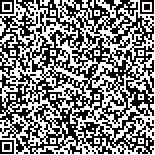下载中心
优秀审稿专家
优秀论文
相关链接
摘要

随着各国航天事业的高速发展以及政府对卫星遥感技术的大力支持,各类军民商用卫星系统层出不穷,建立了较为完善的卫星遥感数据获取体系,为推动经济社会高质量发展提供了新动能。与此同时,人工智能技术的迅猛发展极大程度的提升了数据分析的智能化、精准化水平,为遥感大数据分析与应用带来了新的发展机遇。在互联网时代的背景下,结合新一代人工智能、大数据、物联网、5G等先进技术,推动遥感应用朝着智能化、大众化、产业化方向发展是大势所趋。本文依据当前陆地观测卫星智能遥感技术的发展现状与实际需求,论述了人工智能驱动的遥感技术在资源调查、环境监测、灾害监测等领域中的应用研究现状,探讨了现阶段制约人工智能技术在遥感领域应用成效的关键问题,最后结合遥感大数据处理中存在的问题和挑战,对陆地观测卫星遥感应用技术的发展趋势进行了展望,建立基于人工智能的卫星遥感应用体系已成为卫星遥感技术发展的必然趋势。
With the rapid development of aerospace industry and remote sensing and the strong support from the government, various military and civilian commercial satellite systems have been developed. The establishment of a relatively complete satellite remote sensing data acquisition system injects new momentum for promoting high-quality development of economy and society. At the same time, the rapid development of artificial intelligence has greatly improved the intelligence and precision of data analysis and has brought new development opportunities for remote sensing big data analysis and application. In the context of the Internet era, combining advanced technologies, such as artificial intelligence, big data, Internet of Things, and 5G, is a general trend to promote the development of remote sensing applications in the direction of intelligence, popularization, and industrialization.Based on the current development status and actual needs of intelligent remote sensing technology for land observation satellites, first, this review briefly describes the development of earth observation satellite systems, such as GF and ZY satellites. Second, it classifies and introduces the development status and trends of artificial intelligence technology in the field of remote sensing. Furthermore, the application status of artificial intelligence-driven remote sensing technology in the fields of resource investigation, environmental monitoring, disaster monitoring, smart city, agriculture, forestry, and fishery automation analysis is discussed. Finally, by analyzing existing remote sensing technologies, the challenging problems and development trends of AI in remote sensing are concluded.Different from previous reviews, the present study has two major contributions. On one hand, it carefully reviewed the development status of existing AI-based remote sensing methods. Although AI has been successfully and widely applied in remote sensing, its performance is still unsatisfactory and far behind the intelligence of remote sensing experts in many domains. To address this problem, further development of a new-generation AI and wider application of AI in remote sensing is the key to success. On the other hand, this work provides five typical and key future research directions of future AI-based remote sensing technologies. First, the rapid knowledge mining technology of remote sensing big data is studied, and the comprehensive perception and intelligent analysis of remote sensing are realized with the support of AI technology. Second, the collaborative sensing technology of observation network constructed by multiple remote sensing satellites is studied to achieve more comprehensive, more accurate, and more efficient earth observations. Third, cross-modal multisource remote sensing data fusion and recognition technology are investigated. By fusing multisource remote sensing data of different types, such as visible light, multispectral, infrared, hyperspectral, and microwave, the performance of remote sensing image recognition and interpretation is expected to be dramatically improved. Fourth, the on-orbit intelligent processing technology of remote sensing data, including on-orbit processing hardware and software systems, are examined. Lastly, the human-machine hybrid enhanced intelligent remote sensing technology is studied. In the future, humans and intelligent remote sensing systems are expected to be closely coupled and work together to form a stronger remote intelligent sensing ability.

